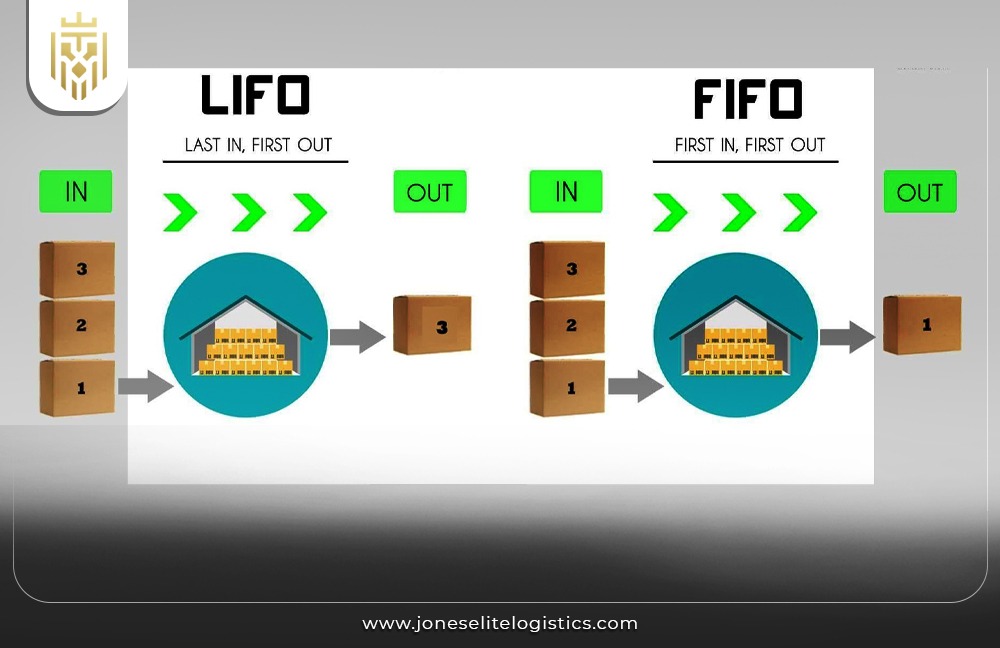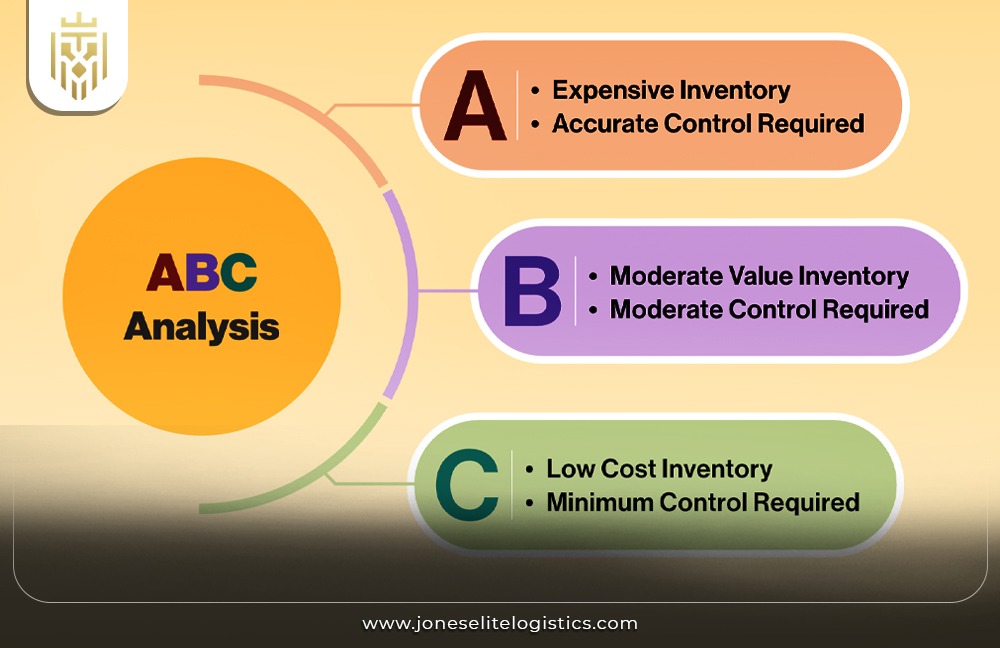Inventory management ensures the right stock levels to meet market demand, avoiding overstocking or understocking. Efficient inventory control minimizes risks, optimizes storage costs, and supports smooth supply chain operations by ensuring timely order fulfillment. Proper inventory management is critical for achieving operational efficiency and minimizing costs. It emphasizes the importance of inventory management in improving cash flow and enhancing productivity.

Difference between Small Scale and Large Scale Inventory:
Small-scale inventory management mainly utilizes manual systems, maintains lean inventory levels, follows basic processes for cost efficiency, and focuses on limited product variety for simpler tracking. Large-scale inventory management relies on automation, handles high volumes, employs advanced analytics, and uses real-time tracking for accuracy and scalability. Both scales impact inventory techniques, costs, and technology, shaping business efficiency and overall supply chain management.
Types of Inventory Management:
The inventory management types include perpetual inventory, periodic inventory, ABC analysis, just-in-time (JIT), consignment, first-in-first-out (FIFO), and Last in First out (LIFO). These techniques help maintain optimal inventory levels and enhance inventory accuracy. Implementing inventory management software supports real-time updates, improving decision-making in warehouse management and supply chain operations.
Perpetual Inventory Management:
Perpetual inventory management is a system where records are updated in real time as sales or purchases occur. This method involves the use of gadgets like bar code scanners and computer-aided inventory control systems. Effective inventory management here enables precise inventory tracking and facilitates quick decision-making, optimizing the supply chain.
Periodic Inventory Management:
Periodic inventory involves taking physical inventory counts of the goods in stock at periodic intervals; for instance, every month or every year. In the process, they perform physical counts on inventories to check on the physical stock. While cost-effective, it may lead to excess inventory or shortages between counts. Adopting inventory management software
ABC Inventory Management:
ABC inventory management categorizes inventory into three classes based on value and importance: Vendors have been categorized in three: A (high value, low volume), B (moderate value, moderate volume), and C (low value, high volume). This method prioritizes managing high-value items efficiently, ensuring good inventory management practices are in place. It helps businesses optimize inventory levels, maintain stock control, and focus on high-priority stock, contributing to efficient inventory control.
Just-In-Time Inventory Management:
The JIT inventory technique is targeted at stock reduction and minimizing inventory cost by ordering products when they are required based on customer demand. This technique emphasizes effective inventory management, reducing excessive inventory while aligning stock with actual needs. However, it requires robust inventory management systems and accurate demand forecasting to ensure success.
Consignment Inventory Management:
Consignment inventory management refers to a system where suppliers deliver their products to the buyer, and the buyer is responsible for selling the products, but the actual ownership of the products remains with the supplier until the products are sold. This strategy lowers inventory cost for buyers while providing visibility to suppliers. Implementing inventory management solutions can streamline this process, ensuring better coordination across the supply chain.
FIFO and LIFO:
FIFO (First-In-First-Out) maintains the business proposition that the first items in the inventory have been bought first and sold first with minimal probability of becoming obsolete, aligning within good inventory management. LIFO (Last-In-First-Out) on the other hand implies that the actual amounts that were the most recently purchased are sold first, and this may reduce the taxable income during inflation but requires precise inventory tracking to avoid inaccuracies. Both methods are integral to robust inventory management practices.

Top 5 Benefits Of Inventory Management:
Managing inventories can bring several advantages: proper inventory levels, inventory shrinkage, storage costs, warehouse operations, and brand development. It enables organizations to satisfy the demand of customers without having to make unnecessary orders that may lead to purchasing products that are not moving well, thus cutting costs and enhancing cash flow.

Optimize Inventory Levels:
Inventory optimization is essential for maintaining optimal inventory levels that meet customer demand while avoiding overstocking. This curb of costs helps to lower the cost of carrying stock, reduces the propensity of stock being rendered obsolete, and enhances the cash flow thereby enabling the organization to run more efficiently with robust warehouse management systems and deal with changes in the market fashion.
Minimize Losses:
The crucial function of inventory control is to minimize the losses due to theft, damage, or even the inventories becoming obsolete. For this reason, business management should incorporate efficient record keeping and installation of tracking systems by leveraging inventory management systems to detect any variations easily and ensure accurate inventory data. Effective inventory control minimize losses, and properly handle inventory to safeguard their investments and improve operational efficiency.
Reduce Storage Costs:
With proper inventory management, businesses can avoid excess inventory, reducing storage costs. Effective warehouse management allows for limited warehousing, thereby cutting on the cost of utilities and insurance as well as getting rid of any stock that may lead to loss, which is beneficial for the business as it leads to low costs, better stock control, and supports a smoother supply chain management.
Enhance Warehouse Operations:
Efficient warehouse management improves stock organization, order picking, and shipping accuracy. By using inventory management software and inventory systems, businesses can streamline operations, ensuring that stock is readily accessible and aligned with customer demand.
Foster Brand Loyalty:
Timely restocking through effective inventory management ensures businesses meet customer demand, reducing stock outs and enhancing trust. Accurate inventory tracking fosters brand loyalty, positioning businesses as reliable partners in the market.

Challenges Of Inventory Management:
The challenges that inventory management experiences include data identification of stock details, ineffective processes, fluctuations in customer demand, and space utilization in the warehouse. Meeting these challenges calls for good systems, ongoing amelioration and fine-tuning, and flexibility, thus being able to deliver sound and satisfactory operations.
Getting Accurate Stock Details:
Maintaining accurate inventory records is critical for smooth operations. Errors in physical inventory or theft can disrupt the inventory system. Adopting advanced inventory management methods like periodic auditing and real-time inventory management software addresses such issues effectively.
Poor Processes:
Inefficient inventory control systems can lead to errors, delays, and high costs. Implementing standardized inventory management techniques, adopting inventory planning, and using inventory management solutions improve workflows, reducing errors and enhancing productivity.
Changing Customer Demand:
Fluctuating customer demand requires businesses to remain flexible. Predictive analytics integrated into inventory management systems help maintain adequate inventory levels and adapt quickly to changes in customer orders without creating an excessive inventory backlog.
Using Warehouse Space Well:
Optimizing warehouse management systems improves space utilization, reduces congestion, and enhances stock accessibility. Advanced inventory control systems ensure systematic stock placement and better use of warehouse resources, aligning with modern inventory management practices.

Warehouse Inventory Management:
Warehouse inventory management involves organizing stock placement, space control, and efficient flow design. This covers stock placement, space control, pick, pack, and ship flow design. Organized warehouse inventory control helps businesses reduce errors, improve order fulfillment, and enhance overall inventory management practices, leading to efficient supply chain management.
E-commerce Inventory Management:
E-commerce inventory management focuses on maintaining adequate stock for online retail. It requires precise inventory tracking, handling returns efficiently, and meeting customer demand promptly. Employing inventory management software ensures businesses maintain their competitive edge.
Inventory Management Trends:
Contemporary approaches to the management of inventory accentuate the utilization of modern technology tools in inventory management for effectiveness, reliability, and expandability. The major trends are tied to the employment of artificial intelligence, cloud solutions, and automated guided vehicles which increase effective performance that allows for monitoring processes’ real-time outcomes, cuts manual work, and leads to more effective decision-making and cost-cutting.

Artificial Intelligence:
AI-powered inventory control systems enable accurate forecasting, minimizing inventory costs and improving efficiency. This technology transforms inventory management by automating processes, recognizing patterns, and ensuring effective inventory management.
Cloud Based Solutions:
Cloud-based inventory management software offers flexibility, real-time updates, and integration with other systems. These inventory management solutions enhance collaboration across teams and ensure the company’s inventory system remains scalable and cost-effective with proper inventory control.
Automated Guided Vehicles:
AGVs streamline stock movement, reducing labor costs and improving inventory optimization. These automated systems complement warehouse management strategies, ensuring precise stock handling and efficient space utilization in warehouses.
FAQs
1) What is inventory management?
Inventory management determines optimal inventory levels to meet customer demand while minimizing costs. It controls inventory holding costs, reduces waste, increases operational efficiency, and ensures timely cash flow for enhanced productivity through effective inventory control systems.
2) What are the benefits of inventory management?
Benefits include optimized inventory levels, minimized inventory losses, reduced storage costs, improved warehouse management, better inventory control and enhanced customer loyalty. It ensures accurate forecasting, timely cash collection, efficient resource utilization, and improved customer demand satisfaction through shorter lead times.
3) What are the types of inventory management?
Types include perpetual inventory, periodic inventory, ABC, JIT, consignment, FIFO, and LIFO. Each method supports specific business needs, ensuring inventory optimization, inventory control, and efficient stock management through a robust inventory management system.
4) What are the challenges of inventory management?
Challenges include inaccurate inventory data, inefficient processes, fluctuating customer demand, and poor warehouse management system use. These issues are mitigated by flexible inventory management solutions that optimize costs, streamline inventory control, and enhance business operations.








